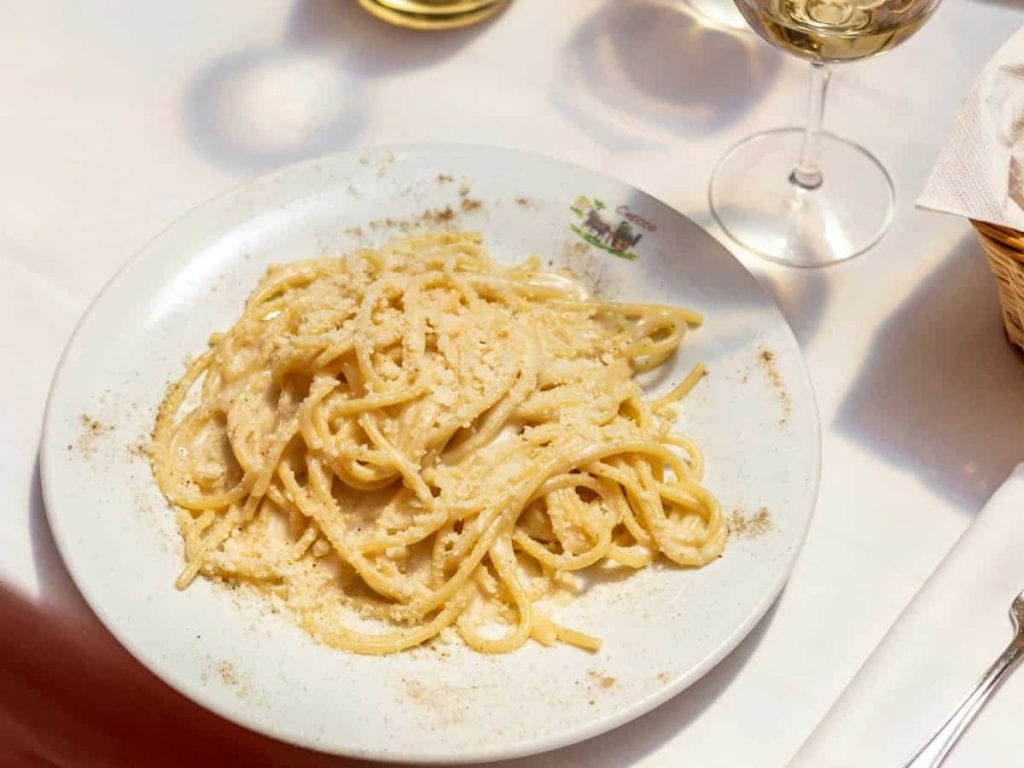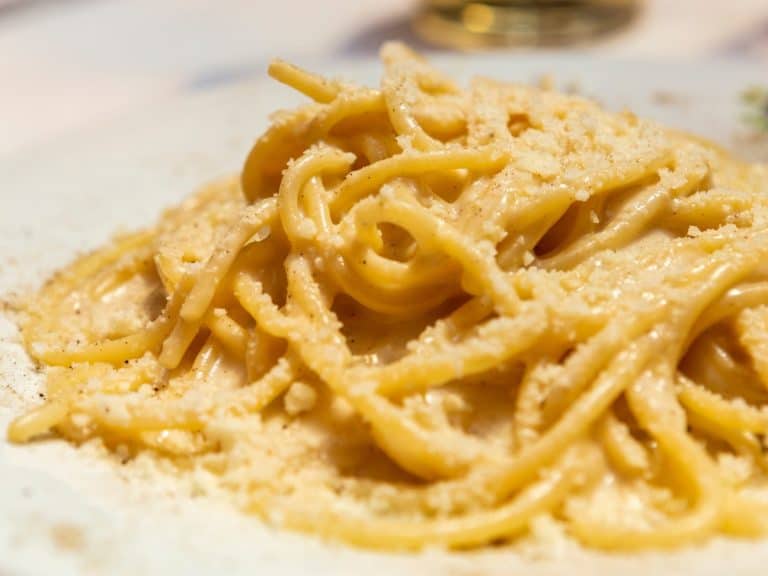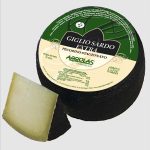There are certain recipes that cannot be improvised—those in which the old grandmother’s rule of “I’ll do it by eye” without measuring ingredients precisely can be disastrous if one lacks the necessary skill and dexterity in the kitchen. This is the case for one of the most hotly debated dishes of all time: cacio e pepe. In recent years, many restaurants and trattorias have adopted the trend of serving ultra-creamy versions. We had already discussed here how this trend has ruined Italian tradition, particularly when it comes to dishes like cacio e pepe and carbonara. Let’s dispel a myth right away: to achieve the perfect cacio e pepe, there is no need to prepare a large amount of cheese sauce in advance and set it aside in a bowl. Everything is emulsified on the spot, just as true Roman tradition dictates. The secret to perfect cacio e pepe lies in those crucial moments between draining the pasta and forming the sauce—where the skilled hands of the cook make all the difference.
Cacio e pepe with the right consistency
The sauce, as mentioned, is made on the spot, using pasta that is not completely drained but left in a hot pan. Finely grated pecorino is then sprinkled over it—this is one of the secrets: the cheese must be finely grated to prevent clumping. While stirring vigorously and continuously, some of the pasta cooking water is added, adjusting with more pecorino if necessary, until a smooth, creamy consistency is achieved—one that coats the pasta well without forming unpleasant creamy puddles at the bottom of the plate.

Choosing the right ingredients
Choosing the right ingredients is as important as following the correct method. As for pasta, the shape can be chosen freely, but it must be artisanal, rough, and porous to help the sauce adhere properly. The pecorino must be a high-quality variety, with a sweet-spicy balance and aged between 10 and 12 months. If the pecorino is not the right one, the cacio e pepe will always be too salty, even if less salt is used in the pasta cooking water. Another key point: the pecorino must be grated by hand to achieve the best texture—almost a fine powder. Black peppercorns are the best ally: they should be freshly ground in abundance to finish the dish.
The cacio e pepe recipe from Checco Er Carettiere
Ingredients for 4 people
- 400g of pasta
- 150g of pecorino romano
- Black pepper, to taste
- Salt, to taste
Method
- Finely grate the pecorino, preferably by hand, being careful not to overheat it.
- Cook the pasta in plenty of salted water, using about 20% less salt than usual.
- Drain the pasta, reserving some cooking water, and place it in a preheated pan.
- With the heat off, gradually add the pecorino and cooking water, stirring vigorously until a smooth, creamy consistency is achieved.
- Plate the pasta, adding more pecorino as desired and a generous amount of freshly ground black pepper.


 Dealcoholised wines, everyone halt: production in Italy is blocked until 2026
Dealcoholised wines, everyone halt: production in Italy is blocked until 2026 Arianna Occhipinti surprises everyone and returns to Verona: "There are too many natural wine fairs, and they’re too scattered"
Arianna Occhipinti surprises everyone and returns to Verona: "There are too many natural wine fairs, and they’re too scattered" “Wine tariffs? Chaos inevitable. Producing it is increasingly expensive.” The Censis-Confcooperative study
“Wine tariffs? Chaos inevitable. Producing it is increasingly expensive.” The Censis-Confcooperative study Lost inside Vinitaly? Here are five tastings to try, according to Gambero Rosso
Lost inside Vinitaly? Here are five tastings to try, according to Gambero Rosso The US market accounts for 24% of global exports of Italian wine. Federvini: “We cannot risk being pushed out”
The US market accounts for 24% of global exports of Italian wine. Federvini: “We cannot risk being pushed out”







